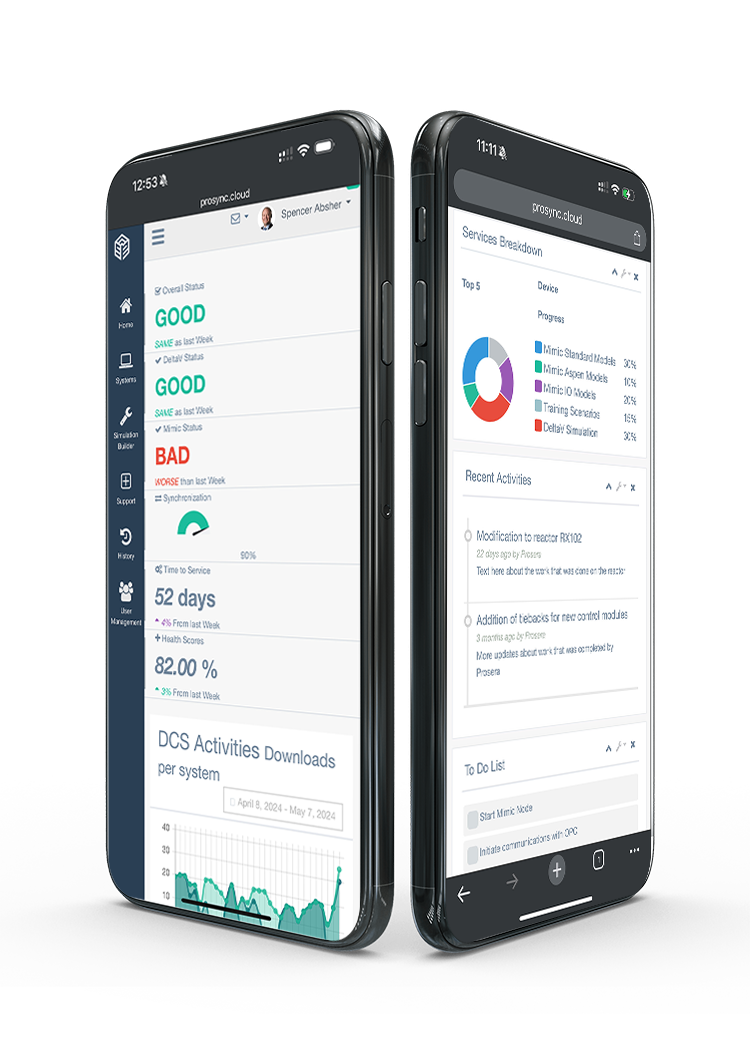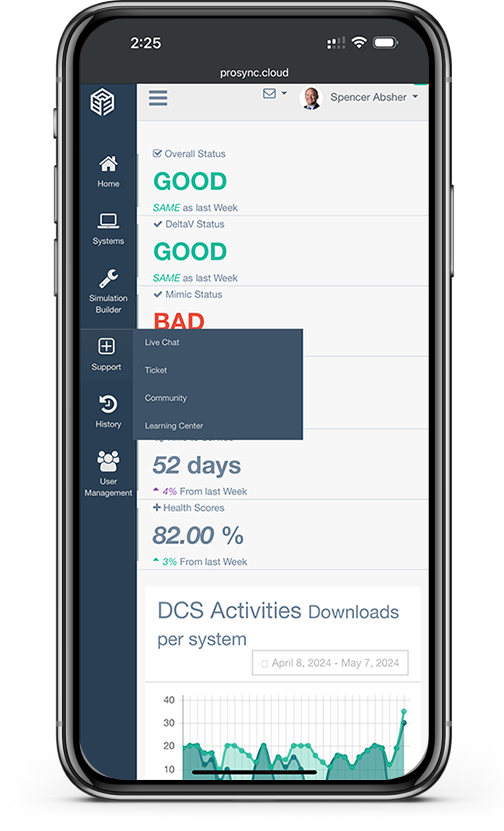A powerful app for simulator lifecycle activities
Driving perpetual business outcomes for dynamic simulators.
.
Client
The client is focused on utilizing a previously developed dynamic simulation system to enable implementation of continual automation improvement, operator training, and advanced control strategies.

SUMMARY
The bird's eye view
Managing configuration changes between the production system DCS configuration and the offline simulator is a time intensive, confusing, and costly activity. Users must be able to monitor the state of the production (live) system, notify appropriate parties when synchronization KPIs from the simulation or development system are not met, and be provided with a method for resolution.
Understanding nuances of simulation systems should not be a barrier to realizing perpetual use, rather, the client should be presented with information on which informed decisions can be made. ProSync users are provided a real path forward to full life-cycle use of the dynamic simulator.

PAIN
A simulation system progressively deteriorating
The value of dynamic simulation is well documented by both technology providers and consumers. The benefits of incorporating dynamic simulation in automation system development, procedural design and checkout, verification of operating procedures, development and testing of advanced control strategies, and operator training are significant. Upon the conclusions of capital projects, clients are largely aware of the benefits, but these benefits are not perpetual without maintenance.
Simulator maintenance is necessary to maximizing the investment but finding the necessary resources is challenging. The industry standard for simulator maintenance is deploying expert resources for "maintenance services." Not only are these services expensive, but have increasingly long lead times.
As the lifecycle of a production facility progresses in a positive direction, the simulation system often progresses towards obsolescence.

VISION
A fully connected environment; automatic synchronization
Historically, dynamic simulation systems have been physically separate and inaccessible from the production system of which they are a digital twin. Although partitioning these systems is still a best practice, intelligent and safe connectivity can be implemented. Such connectivity results in users being aware, in real time, of the status and performance capability of the dynamic simulator. A key step in any digital transformation endeavor is asset connectivity, and this connectivity allows for data capture and analysis processes impossible via manual efforts.
Being presented with information from a fully connected environment must be immediately followed by suggested corrective actions, and method in which those actions can be executed.
TECH
The rules of the game
Prosera developers want to ensure simplicity for future maintenance and support, something that can be ensured by using a common framework for web and mobile applications. Enter JavaScript-React.
The approach ensures minimal change in code for the multiple platforms on which the application is installed.
.png?width=99&height=86&name=download%20(1).png)

.png?width=99&height=111&name=download%20(2).png)

UX/UI
What you see is what you get
Given the solution's use and implementation across functional groups, it is to ensure adoption and ease-of-use by staff members of diverse technological capabilities, across a wide range of screens and sizes.
Visual cues were incorporated into the apps, while special focus was placed on ensuring that tasks required lesser number of user interactions and clicks for completion.
Initial onboarding from Prosera includes training of all users.
RESULTS
Dynamic simulation is essential to automation processes
Manual collection of data to determine the state of the simulation system is a $50,000 - $100,000 expense performed annually. Implementing ProSync reduces the annual cost by up to 75% with 10x the data collected not once a year, but every day. Clients are provided not just data and information but recommendations and paths forward for issue resolution and preventative maintenance.
Engineering and operations have a powerful tool that is available for constant and continual use to maximize the value of the dynamic simulator.
"Creating a life-cycle vision and implementation strategy is equally, if not more, important compared to that of the capital project. Deploying technology to solve the life-cycle challenges of dynamic simulation is vital."
Edin Rakovic, President @ ProSync
